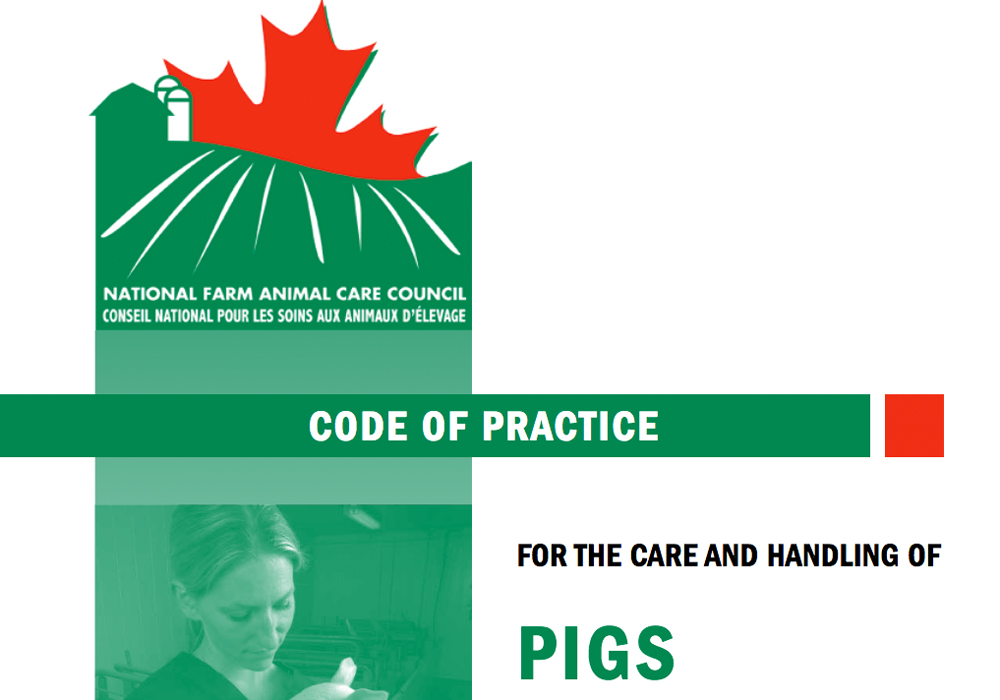The swine sector at times falls under scrutiny by various groups that have both open and hidden agendas, trying to shed light on what they think hog farmers are doing “behind the curtain.”
I plan to take this opportunity to pull back the curtain and highlight some of the excellent work the swine sector has done and continues to do with respect to enhancing the welfare and well-being of pigs in Canada.
On March 6, 2014, the National Farm Animal Care Council (NFACC) released the Code of Practice for the Care and Handling of Pigs, known as the new pig code.
Read Also

Saskatchewan dairy farm breeds international champion
A Saskatchewan bred cow made history at the 2025 World Dairy Expo in Madison, Wisconsin, when she was named grand champion in the five-year-old Holstein class.
Like codes that exist in other livestock sectors, the new pig code sets the minimum standard to which all swine farms will practise, focusing on housing and handling facilities, feeding and water, animal health, husbandry practices, transportation and euthanasia. I will focus on three of these areas.
Gestating gilt and sow housing requirements
Sow housing is perhaps one of the most controversial issues for swine production around the world.
The new pig code requires newly built farms to house sows in pens from 35 days after mating until they are moved into farrowing crates to give birth.
I find this interesting because both stall gestation and pen gestation offer some advantages and disadvantages to the sow.
In a gestation stall (two feet x seven feet), a sow can be individually fed to her daily needs, while being protected from bully sows. A stall also offers some ability to better manage disease (feeding and dunging areas are separate so there is very limited manure exposure).
A gestation pen will allow sows to turn around, exercise and exhibit more natural behaviours but it will also expose sows (especially young, small or thin sows) to high levels of competition for resources, aggression and stress.
The consensus during the development of the new pig code resulted in gestation stalls being phased out based on the advantages and disadvantages outlined above.
However, the pen-versus-stall debate focuses on housing of adult, gestating sows, which make up less than five percent of the pigs raised on Canadian swine farms. The remaining 95-plus percent of pigs being raised are already raised in group pens their entire lives.
Enrichment
The new pig code requires that pigs are provided with multiple forms of enrichment that aim to improve welfare through enhancement of their physical and social environment.
Farmers can enrich the pigs’ environment in many ways:
- social enrichment — allows direct or indirect contact with other pigs
- occupational enrichment — stimulates and challenges the pig psychologically and encourages exercise, such as by providing an object for play
- physical enrichment — by altering the pen or adding accessories or substrates, such as straw, to entertain the pigs
- sensory enrichment — involves visual, auditory, olfactory, tactile and taste stimuli
- nutritional enrichment — presenting varied food types and changing the delivery methods of the food
Many farms provide various forms of enrichment like suspended chains, blocks, balls and toys for the pigs to play with. However, pigs become bored or uninterested in these forms of enrichment if they are continually exposed to them, and farmers will be challenged to continue creating novel opportunities to enrich the pig’s environment.
Many farms will change feed ingredients, texture, flavours, form, and delivery every two to three weeks for growing pigs.
Pain management
There are several elective husbandry procedures used on swine farms to allow management of groups of pigs indoors. For example, male piglets are surgically castrated (typically at three to five days of age) to reduce aggression shown toward handlers and other pigs later in life, as well as to reduce the presence of “boar taint” (a foul taste) in meat from sexually mature boars.
Most piglets have their tails docked at three to five days old to reduce the potential for other pigs to chew on them later in life. Surgical castration must be accompanied by analgesic administration for post-procedure pain control.
The new pig code requires all surgical castration performed after 10 days of age to be accompanied by anesthetic (like freezing a surgical site). Other painful procedures now have age restrictions or require analgesic administration, including ear notching for identification and tail-docking.
The swine sector agrees that these elective procedures cause pain. What is less clear are options for addressing analgesia in very young piglets.
Many anti-inflammatory medications are licensed for swine but most are labelled as anti-fever meds.
A different approach to boar taint could be avoiding surgical castration all together and adopting the use of the product Improvest, made by Zoetis.
As a swine veterinarian and stakeholder in the Canadian swine sector, I spend considerable time with pig farmers discussing health and welfare. I believe the swine sector should pull back the curtain and show society and pork consumers all the efforts being made to improve the lives of the pigs in our care.
Check out www.youtube.com/user/MBPorkfan/videos to learn more about what’s behind the curtain.
Blaine Tully is a veterinarian and owner of Swine Health Professionals Ltd. in Steinbach, Man.















